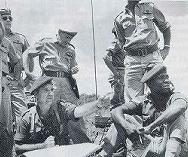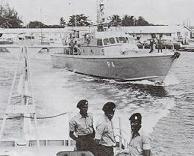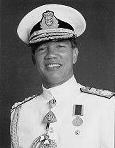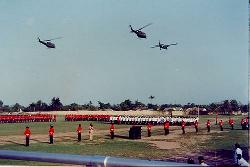 |
|||||||||||
| OVERVIEW – Background | |||||||||||
| Back to Overview | |||||||||||
History
of the JDF Listen to the history of the JDF In order to hear audio clips on this site you have to have
the Real Audio player installed on your system. Click on this button to go to the Real
Audio site and download the player.
The Jamaica Defence Force (JDF) was formed just a few days prior to Jamaica becoming a sovereign independent state within the Commonwealth of Nations. Although the Force itself is still young, it has a long history of descent and traditions stemming from units raised in the West Indies since the mid-seventeenth century. Early Origins Its original predecessor was the ancient Jamaica Militia of 1662, the immediate successor to Oliver Cromwell’s troops which had taken Jamaica from the Spaniards a mere seven years earlier. In 1694, in the only invasion of Jamaica other than the English one of 1655, the French landed a force of over 1,400 men at Carlisle Bay in southern Clarendon. Here they were met by militiamen, initially only some 250, who alone – without support from any naval or regular army units – repulsed the French with about 100 men killed or wounded. Estimates of the French losses were between 150 and 350. The various cavalry and infantry regiments of the Jamaica Militia remained on call, at first for fear of further French attack; although after Carlisle Bay there was none. Thus those early part-time soldiers spent most of their time in uniform in an internal security role, which largely meant dealing with slave disturbances. Later however, with justified fear of Napoleonic incursions the Militia reached its maximum strength at the beginning of the nineteenth century, with 10,000 infantry and 1,000 cavalry divided between 3 regiments of horse, one for each county, and 18 regiments of foot, one for each of the then eighteen parishes of Jamaica – and commanded at one time by no less than four major generals. In 1906, at a time of established international peace, and after nearly two and a half centuries of existence, the Jamaica Militia was finally disbanded. Some of its members formed themselves into the semi-official St Andrew Rifle Corps and when war came to the world in 1914 its members were re-embodied as the Kingston Infantry Volunteers. At the start of World War II in 1939 these part-time soldiers were renamed, this time as the Jamaica Infantry Volunteers (JIV). Towards the end of the war, in 1944, in recognition of its then unit status the JIV was retitled ‘Jamaica Battalion’, and finally eleven years later – ‘Jamaica Regiment’. The regional link Between 1795 and 1919, elements of the former renowned West
India Regiments fought in every British campaign in the Caribbean, in the West African
Ashanti Wars of the mid-nineteenth century, and in the First World War in which they were
joined by eleven battalions of the wartime British West Indies Regiment. In all these
campaigns and through all those many years Jamaicans – probably more than other West
Indians – served with distinction. Birth of the JDF With the formation of the (British) West Indies Federation in
1958, the original West India Regiment, which had been disbanded in 1926, was re-formed in
1959 with some 400 soldiers of the Jamaica Regiment as its nucleus. The politically
unsuccessful Federation was dissolved two months before Jamaica’s Independence on 06
August 1962 and – with the freshly disbanded West India Regiment as the core of the
new Jamaica Regiment – 31 July 1962 saw the creation of the Jamaica Defence Force.
FORMATION The Jamaica Defence Force (JDF) was formed on 31 July
1962 with the West India Regiment – disbanded just the day before – providing the nucleus.
On formation, the force comprised two regular units ‘Headquarters and Support
Units’ (colloquially known as "Staff and Services"), and the First The Third Battalion the Jamaica Regiment (3JR(NR)), which was formed in 1961 as the then sole component of the Jamaica National Reserve, became a part of the Jamaica Defence Force on 31 July 1962. Headquarters and Support Units comprised the Force Headquarters, the Garrison Administrative Unit, the Jamaica Military Stores Depot, the Jamaica Military Workshop, the Military Estates Office and the Jamaica Military Pay and Records Office. In 1963 the Jamaica Air Wing, the Jamaica Sea Squadron and the Force Engineer Unit (incorporating the Military Estates Office) were formed as sub-units of Headquarters and Support Units. The Jamaica Military Band (the band of the original West India Regiment of 1795 which, following the Regiment’s disbanding, had been renamed ‘Jamaica Military Band’ in 1927 with semi-military status) had become a purely civilian unit in 1959 as a corporate body under the Ministry of Home Affairs. It now became a part of the Jamaica Defence Force with the advent of independence in 1962. MAJOR UNITS As already shown, the Jamaica Defence Force initially
comprised the Force Headquarters (HQ JDF), Women were recruited into the JDF for the first time in 1976 when the JDF Women’s Unit was formed as a sub-unit of the Support and Services Battalion thus women once again served in the military in Jamaica, as they had in the two decades immediately before independence.
In 1977 the renamed JDF Air Wing and JDF Coast Guard, previously sub-units of Support and Services Battalion, were made autonomous. In the same year the JDF Construction Squadron, which initially comprised non-combatant soldiers and which was raised to support a government mini-dam program, was established as a sub-unit of the Support and Services Battalion.
In similar responses to both internal and official civil needs, the engineering elements of the JDF were both upgraded and consolidated in 1991 with the formation of the First Engineer Regiment (1Engr Regt (JDF)), incorporating the JDF Engineer Unit and the JDF Construction Squadron. Currently the Force comprises eight major units, which are listed below in order of precedence:
ACCOMPLISHMENTS In keeping with one of its designated roles, the JDF has supported the Jamaica Constabulary Force, the national civil police organisation, in the maintenance of law and order since 1962. The JDF was part of the coalition of regional forces which restored democracy to Grenada between 1983 and 1985. It was also a part of the US-led force which entered Haiti in 1994 to assist in the restoration of democracy and subsequently provided a contingent for peace keeping duties there, serving for the first time under the flag of the United Nations. The JDF assisted Jamaican water-supply development from 1983 to 1985 with the construction of a major water pipeline from Yallahs, St Thomas to the Mona Reservoir in St Andrew. Between March 1993 and July 1995 the Engineer Regiment repaired over 55 km of farm roads in several parishes of Jamaica. Ever since its formation the force has helped essential services during industrial disputes. The JDF is also very active in environmental protection. The JDF Coast Guard is trained and equipped to deal with marine oil spills and interestingly sent one Officer and a Senior Rate to Alaska in 1990 to assist with the clean up of the memorable Exxon Valdez oil spill. The Force has been significantly involved in disaster relief both in Jamaica and in other Caribbean countries. Several units were deployed to western Jamaica in 1979 following massive floods which occurred in June that year. Troops were deployed to Antigua, Dominica and St Lucia after the devastation of Hurricane Hugo in 1989, to the Bahamas following Hurricane Andrew in 1992 and to Antigua, Barbuda and Anguilla in 1995 following Hurricane Luis. Through the years the JDF has worked closely with the Jamaican National Office of Disaster Preparedness and Emergency Relief. With the assistance of the Canadian government the JDF established a Junior Command and Staff School at the JDF Training Depot, Newcastle in 1993. The school trains a cross section of officers of the force to NATO standards and officers from other Caribbean countries and Canada, as well as selected officers of the Jamaica Constabulary Force, The Department of Correctional Services and the Jamaica Fire Brigade. CEREMONIAL The JDF has played a full role in the numerous State Visits and other Jamaican ceremonial occasions which have taken place since independence. Two major military tattoos have been successfully staged in 1968 and 1983.
On the visits of the Queen in 1966 when the colours of the First Battalion the Jamaica Regiment were trooped and in 1975 those of the Third Battalion the Jamaica Regiment (National Reserve) were trooped. On Her Majesty’s further visits in 1983 and 1994 the Second Battalion the Jamaica Regiment trooped its colours. COMMAND The Command of the Force rests with the Chief of Staff who is appointed by the Governor-General and is ultimately of the rank of Major General or equivalent. The Force has been commanded by seven Chiefs of Staff since its formation.
PAST CHIEFS OF STAFF
The Jamaica Defence Force comprises of a Regular Force and a Reserve Force. The Regular Force comprises six major units with just over 2,500 officers and other ranks. They make up the Force’s combat arms (two regular infantry battalions); the combat support arms (an air wing, a coast guard and an engineer regiment); and the combat service support arm – a logistic battalion. The Reserve Force comprises three components – an infantry battalion and air and sea elements – and is collectively known as the National Reserve. It has a strength of just under 1,000 officers and soldiers, most of whom serve part-time.
|
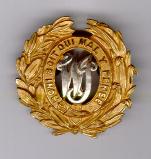
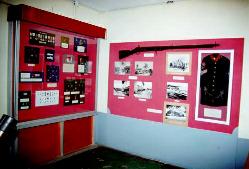
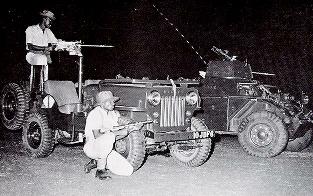 Battalion the Jamaica Regiment (1JR), as well as the Jamaica National Reserve, at that
time comprising one infantry battalion.
Battalion the Jamaica Regiment (1JR), as well as the Jamaica National Reserve, at that
time comprising one infantry battalion.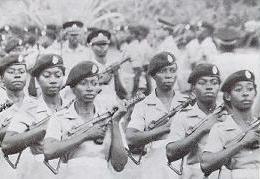 two regular units and the Jamaica National Reserve. In 1973 for
improved command and control, the Support and Services Battalion (Sp & Svcs Bn) was
formed to incorporate all the ‘support units’ of the former ‘Headquarters
and Support Units’.
two regular units and the Jamaica National Reserve. In 1973 for
improved command and control, the Support and Services Battalion (Sp & Svcs Bn) was
formed to incorporate all the ‘support units’ of the former ‘Headquarters
and Support Units’.